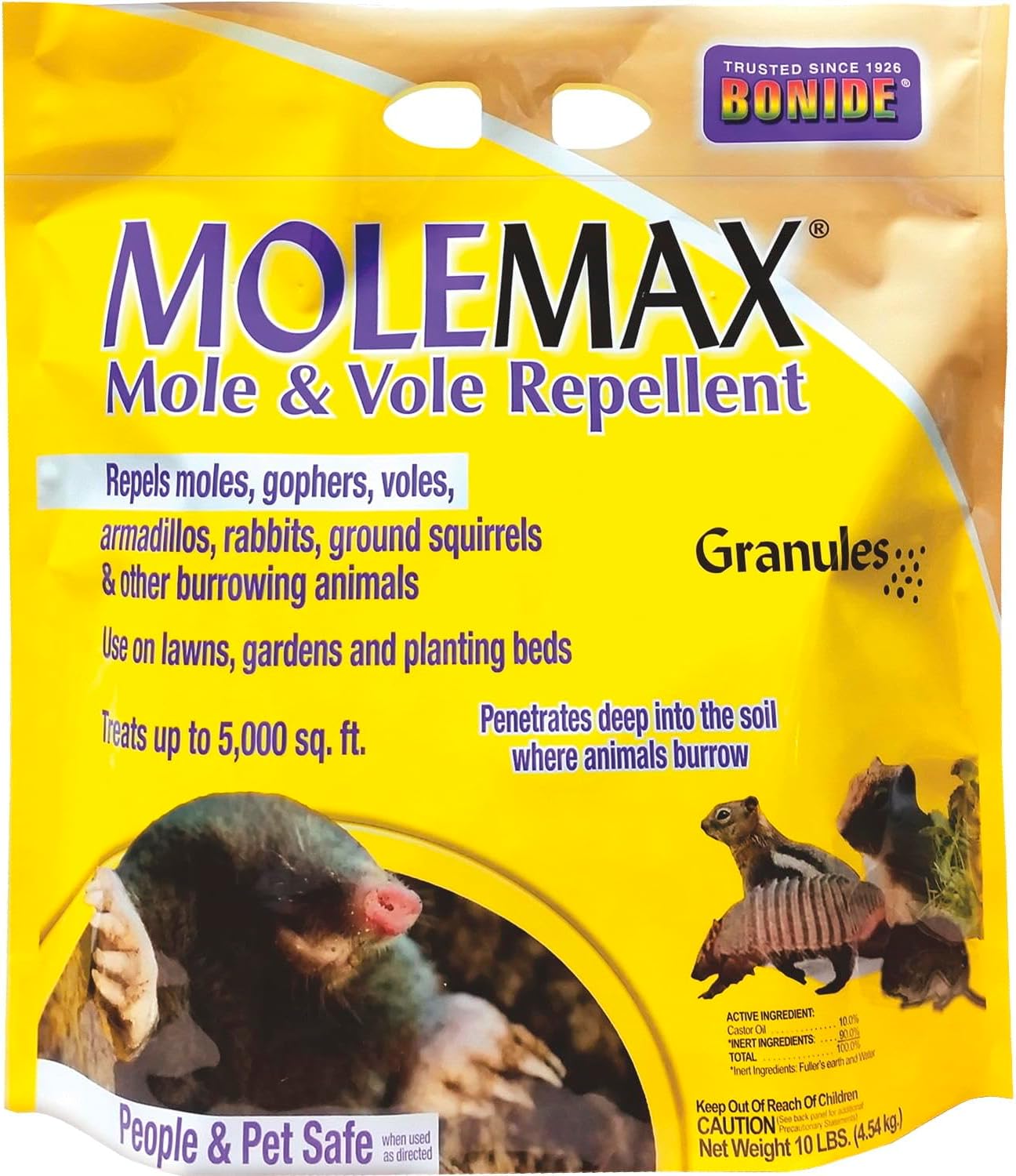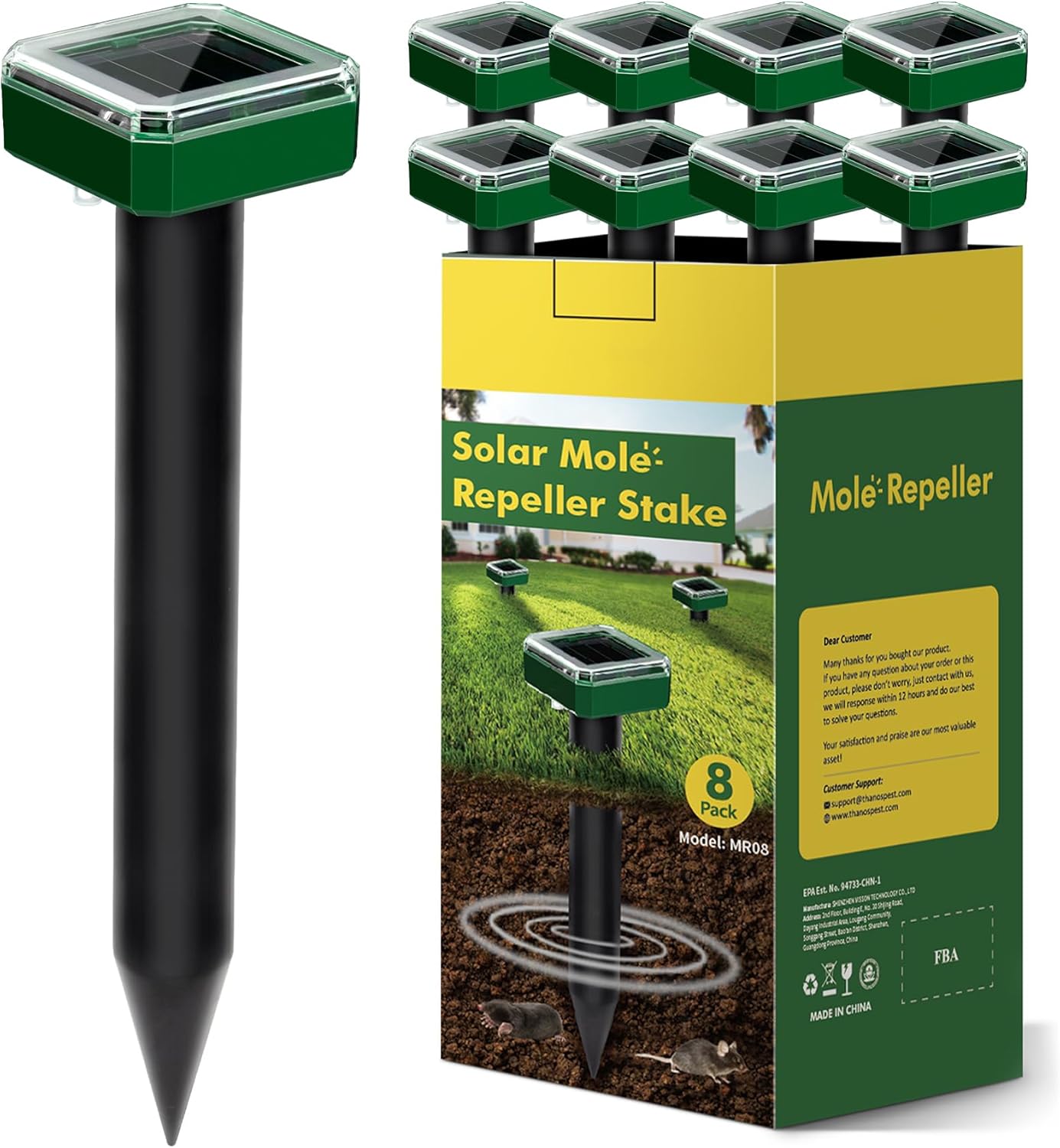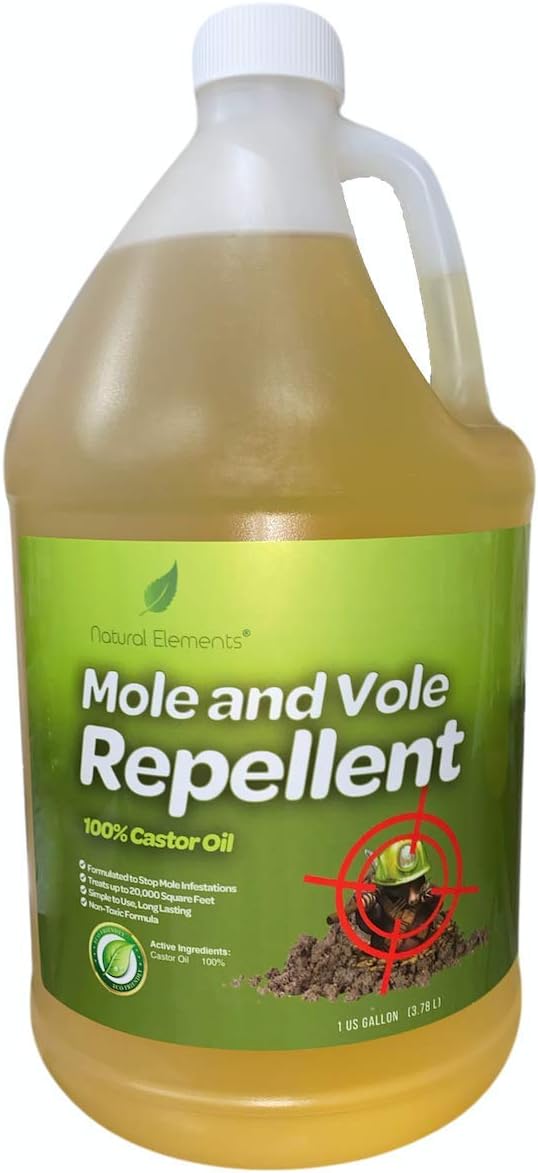Vole Control & Removal
Voles are small rodents that can cause significant damage to lawns, gardens, and ornamental plants through their feeding and tunneling behaviors. Often mistaken for mice or moles, these herbivorous pests create distinct surface runways and can quickly destroy root systems and bark. Understanding their behavior patterns is crucial for implementing effective control measures.
Recommended Products
Bonide MOLEMAX Repellent
A natural castor oil-based granular repellent that protects lawns and gardens from burrowing pests. This ready-to-use formula treats up to 5,000 square feet and provides up to three months of protection while remaining safe for plants.
- Natural Ingredients
- Extended Protection
- Wide Coverage
- Plant Safe
CritterTec Solar Mole Repellent Stakes
Humane solar-powered stakes that emit sonic waves and vibrations to deter burrowing pests from your yard. Each set covers up to 5000 sq.ft with eco-friendly, continuous protection for up to 7 days on a full charge.
- Solar Powered
- Wide Coverage
- Weather Resistant
- Pet-Safe Operation
Natural Elements Mole Repellent
A pure 100% castor oil repellent that naturally deters moles and voles by disrupting their sensory perception. This eco-friendly gallon formula treats up to 20,000 square feet with long-lasting protection that's safe for pets, plants and the environment.
- Pure Castor Oil
- Extensive Coverage
- Eco-Friendly Formula
- Sensory Deterrent
⚠️ Health & Safety Risks
- Lawn damage
- Plant root destruction
- Tree bark damage
- Garden losses
- Surface tunneling
🚨 When to Call a Professional
- Large populations
- Failed DIY methods
- Extensive damage
- Commercial properties
- Agricultural areas
🏥 Emergency Response
- Tree damage: Contact arborist
- Crop damage: Document losses
- Ground collapse: Fill holes
- Plant death: Remove affected plants
- Property damage: Assess and repair
🏡 DIY Removal Guides
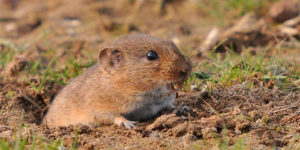
Best Vole Traps for 2025: Complete Guide to Effective Humane & Lethal Options
Voles can devastate lawns and gardens in a surprisingly short time, with their prolific breeding allowing populations to explode from…
Read More →🛑 Prevention Tips
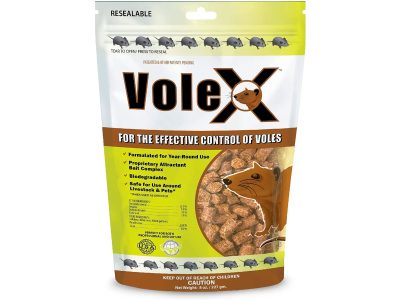
Best Vole Repellent for 2025: Complete Guide to Effective Natural & Chemical Solutions
Voles can quickly transform a beautiful yard into a damaged landscape with their extensive tunnel systems and plant destruction. These…
Read More →🔬 Professional Solutions & Products
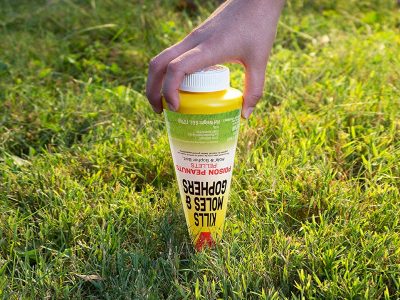
Best Vole Poison for 2025: Complete Safety Guide to Effective Options
Vole infestations can devastate lawns and gardens in remarkably short time frames, with these prolific rodents capable of destroying entire…
Read More →🐁 Related Pests
Often confused with:
🔍 Signs of Activity
- Surface runways
- Gnawed bark
- Dead grass paths
- Plant damage
- Small burrow holes
🏠 Common Areas
- Lawns
- Gardens
- Flower beds
- Tree bases
- Ground cover areas
Frequently Asked Questions
How do I identify vole damage?
Look for surface runways in grass, gnawed bark at ground level, and small burrow entrances. Voles create distinct paths 1-2 inches wide in lawn areas.
What attracts voles to my yard?
Dense ground cover, tall grass, mulch, abundant vegetation, and snow cover attract voles. They prefer areas with good cover and readily available food sources.
How do I prevent vole damage?
Maintain short grass, remove ground cover near valuable plants, install barriers around gardens, and protect tree bases with hardware cloth or tree guards.
Do vole repellents work?
Commercial repellents provide temporary relief. Habitat modification, exclusion methods, and proper landscaping practices offer more reliable long-term control.
How quickly do voles multiply?
Voles can produce 5-10 litters per year with 3-6 young per litter. Their rapid reproduction rate makes early control measures important.
Will removing mulch help?
Yes, reducing or removing mulch and ground cover eliminates protective cover voles need. Maintain a clear area around valuable plants.
Are voles active year-round?
Yes, voles remain active throughout the year. Winter damage can be severe as they feed on bark and roots under snow cover.
How do I protect my garden?
Install underground fencing at least 12 inches deep, remove weeds and ground cover, create bare soil barriers, and use raised beds with protection.
Will voles leave on their own?
Voles rarely leave areas with adequate food and cover. Active control measures and habitat modification are necessary for effective management.
How long does control take?
Initial control measures can be implemented within days, but establishing effective prevention typically requires several weeks of monitoring and maintenance.
